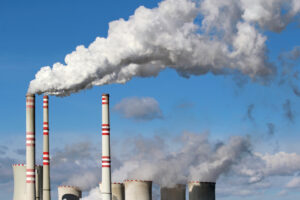A little-known rule under the Clean Air Act (CAA) known as the “exceptional events rule” allows local regulators to exclude certain high-pollution days from their National Ambient Air Quality Standards (NAAQS) data reporting.
“Exceptional Events are unusual or naturally occurring events that can affect air quality but are not reasonably controllable using techniques that tribal, state or local air agencies may implement in order to attain and maintain the [NAAQS],” states the EPA Exceptional Events website.
Exceptional events include dust storms; volcanoes; and, increasingly, smoke from wildfires.
CAA background
Air emissions from both stationary and mobile sources are governed by the CAA, which provides the authority for the EPA to set and enforce NAAQSs.
One of the act’s goals was to set and achieve NAAQSs in every state by 1975 to address the public health and welfare risks posed by certain widespread air pollutants. At the same time, states were directed to develop state implementation plans (SIPs), applicable to appropriate industrial sources in the state, to achieve these standards. The act was amended in 1977 and 1990 primarily to set new goals (dates) for achieving attainment of NAAQSs because many areas of the country had failed to meet the deadlines.
A recent investigation from the California Newsroom, MuckRock, and The Guardian revealed the EPA used the exceptional events rule “to strike pollution from clean air tallies in more than 70 counties, enabling local regulators to claim the air was cleaner than it really was for more than 21 million Americans,” The Guardian article reports.
According to the article, examples of poor air quality days forgiven using the exceptional events rule include:
- “Local regulators in 21 states filed requests with the agency to forgive pollution and, in 20 of those states, had them approved.
- In total, local regulators made note of almost 700 exceptional events. The EPA agreed to adjust the data on 139 of them.
- The adjustments came in more than 70 counties across 20 states. The affected areas stretched from the forested Oregon coast to the Ohio rust belt, from the craggy Rhode Island coastline down to the bayous of Louisiana.
- In more than half of the states where exceptional events were forgiven, industry lobbyists and business interests pressed to make that happen, sometimes as the only public voice in the regulatory process. Also, to protect the status quo, some regulators spent millions of taxpayer dollars doing research for and making exceptional events requests, sometimes working hand in hand with industry stakeholders.”
- 166 days of excessive pollution in California have been forgiven since 2016, the report found.
Too many poor air quality days result in stricter regulations, meaning industry pollution sources must make costly investments to reduce pollution that impacts the NAAQS.
While the EPA doesn’t like calling the exceptional events rule a loophole, it’s often referred to as “a magic wand, an escape hatch, a get-out-of-jail-free card,” said Molly Peterson, lead reporter on the California Newsroom investigation, in an NPR interview. “Even so, regulators around the U.S. straight-up tell us and the EPA that they’re going to lean on this rule more, not less, in the years ahead. … The [CAA] wasn’t written in an age of climate change like a lot of our environmental laws. It didn’t anticipate the dramatic increase in wildfire smoke we’re seeing in the skies now. You can’t put scrubbers on wildfires the way you can on coal plants.”
“What exceptional events determinations seem to show is a poorer and poorer fit between the policy we have and the problems it’s trying to solve,” said Michael Wara, a law professor at Stanford’s Woods Institute for the Environment, according to NPR.
“Wara calls it a warning light on the dashboard for the [CAA],” Peterson added. “Climate change is making air pollution worse. Regulators say pretty much all they can do is warn people about all of this, unless the law is changed.”
Unless the CAA is amended by Congress to account for climate change and provide better guidance concerning exceptional events, the fact remains that the air quality across the nation is worse than the NAAQS data reveals.

